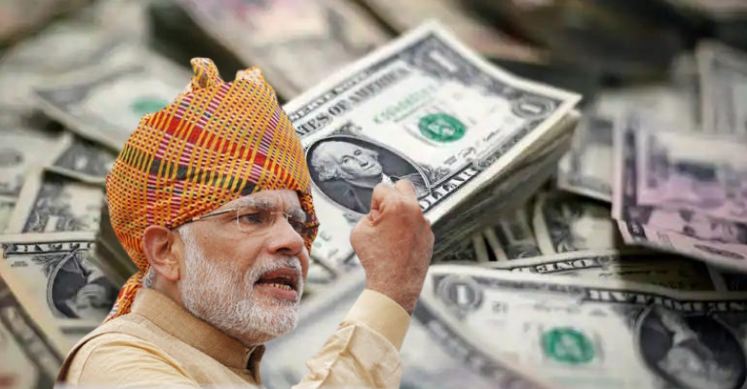- Since past few years, India has become a very resilient economy amid global uncertainty
- The current level of foreign exchange reserves is enough to cover more than one year of imports.
- The Economic growth for FY 23 is estimated to be around 8-8.5% as per the Economic Survey.
Since past few years, India has become a very resilient economy amid global uncertainty. While the inflation in many developing countries is nearing double-digit, and above 5 per cent in developed countries (note that these countries never crossed 2 per cent inflation in the last few decades), India’s inflation remained relatively stable at 5-6 per cent.
Moreover, at a time when the foreign exchange reserves of countries like Brazil, South Africa, Turkey, and Pakistan are depleting, India amassed a record amount of forex in the last few years. In the ongoing fiscal year, India’s foreign exchange reserves have been above the foreign debt the country had throughout that year. This means India can service all of its debt in one go without impacting its macroeconomic stability.
The current level of foreign exchange reserves is enough to cover more than one year of imports. The foreign exchange reserves of the country are around 634 billion dollars while the foreign debt is around 600 billion dollars.
According to the Economic Survey, “The Indian economy, as seen in quarterly estimates of GDP, has been staging a sustained recovery since the second half of 2020-21. Although the second wave of the pandemic in April- June 2021 was more severe from a health perspective, the economic impact was muted compared to the national lockdown of the previous year. Advance estimates suggest that GDP will record an expansion of 9.2% in 2021-22.”
Unlike countries like Pakistan and Turkey, India never let its foreign debt exceed 20% of GDP, thus maintaining macroeconomic stability. The country is all set to soar up above 8 per cent economic growth in the ongoing decade, making it the third-largest economy in the world after the United States and China by 2030. India is already the third-largest economy in terms of Purchasing Power, but in market exchange terms it is still behind Japan (5 trillion dollars approx) and Germany (4 trillion dollars approx).
The Economic growth for FY 23 is estimated to be around 8-8.5% as per the Economic Survey. Given the fact that the base effect will be eroded with around 9-9.5% growth rate this year and the economy will be above the pre-pandemic level, an above 8% growth rate certainly looks commendable. Countries like China and Brazil, which were growth engines of the global economy for the last four decades alongside India, are fading away with below 5 per cent growth meanwhile India’s growth shot up above 8 per cent in all prospects.
The Economic Survey this year aims to make the document a one-stop solution for the data on the Indian economy. It did with the first volume introduced by Arvind Subramanian to spread wide his ideas into the public domain, while the second volume has been strengthened with a vast amount of data on sector-wise exports/imports, external sectors, 80 high-frequency indicators to track the economy, reforms introduced in the last few years, subsidies, and so on.
As of now, people interested in public policy and public finance do not need to visit multiple resources to access macroeconomic data of the previous year and estimated projections for the next year because the Economic Survey provides a one-stop solution for all this data.
Moreover, in the last chapter, the Economic Survey provided some gripping visuals of urban infrastructure, population density, crop patterns with the help of various Geo-spatial and satellite images. The Survey is a highly readable document and presents the State of the Indian Economy, which looks optimistic stepping into the ongoing decade.
